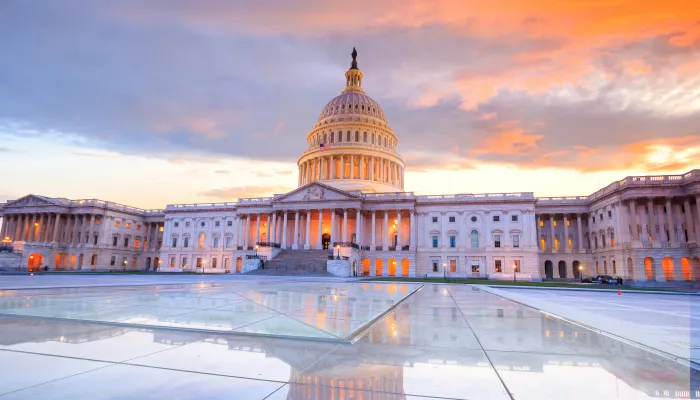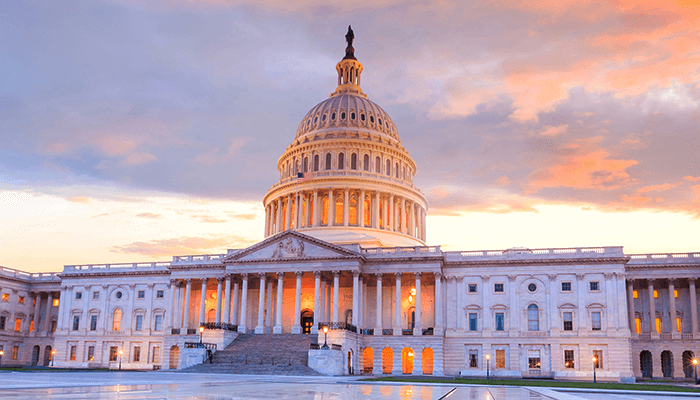Op-Ed: Fiscal Cliff Deal: What We Need
Politico | December 6, 2012
When is a fiscal deal different from a Grand Bargain? When we talk about the solutions to two important and related challenges that we face — the fast approaching fiscal cliff and the even more devastating fiscal abyss that looms ahead due to our projected structural deficits.
The nation’s media and our federal elected officials are currently focused on the fiscal cliff that, unless avoided through a negotiated deal by the end of the year, will trigger dramatic spending cuts and tax increases that could push the nation back into recession. If Congress and the White House send us over the cliff by failing to reach an agreement, it will be a shameful triumph of politics over the public interest for which our elected officials should be held accountable.
But avoiding the cliff must not be our only objective — not when we also face huge structural deficits and mounting debt burdens in coming years that threaten the future of our country and families. What we need to see over the next three weeks is a deal that averts the fiscal cliff and builds a bridge to achieving a fiscal Grand Bargain in 2013 that will help ensure we do not fall into the abyss.
Federal debt now exceeds $16 trillion, and based on full and honest accounting — which includes unfunded Medicare, Social Security and other retirement obligations — puts the overall debt burden at more than $71 trillion, and growing by about $100 billion a week! Put bluntly, we are mortgaging the future of our children and grandchildren at record rates. That is not only irresponsible, it is immoral.
What we need in order to address this fiscal abyss is a Grand Bargain that addresses the two main drivers of our structural deficits: unsustainable social insurance programs, especially health care programs, and a complex, unfair, uncompetitive and inadequate tax system. But a lame duck Congress cannot and should not tackle comprehensive tax and social insurance reforms. It will take dedicated effort in 2013 from the new Congress and its responsible committees, as well as a non-partisan public education initiative sanctioned by the White House, and private discussions with key bipartisan leaders to forge such a bargain.
But what Congress and the White House can do now is solve the cliff dilemma in a way that provides a down payment toward reducing the 2013 deficit on both the spending and tax side, while also paving the way to a Grand Bargain by a date certain next year. And both Republicans and Democrats can achieve all this while saving face if they step away from their rigid partisan and ideological stances. Here are some examples of how it can be done:
The fiscal cliff solution could involve specific spending cuts, including a portion of the automatic defense and other spending cuts now in place. It could allow the payroll tax cut to expire. And it could enact measures to increase the effective tax rates — reflecting the taxes that people actually pay — for those making more than a stated threshold (e.g., $250,000), without boosting marginal income tax rates. For example, Congress could allow an increase in the capital gains rate and tax on dividends to 20-25 percent for anyone whose income exceeds the stated threshold.
Congress could also limit the tax expenditures for those above a certain level of adjusted gross income — say, $500,000 — to include only the two large ones that, due to the Alternative Minimum Tax (AMT), are available to upper middle class taxpayers: the deductions for interest paid on a primary residence and charitable contributions. This approach would save face for Democrats by raising taxes on the wealthy, and for Republicans by avoiding an increase in marginal income tax rates. Other tax rate increases and larger spending reductions would be deferred until a set date in 2013.
If the parties agreed to measures like those above, we would achieve a deficit down payment in 2013, while being able to avoid larger tax increases and spending cuts for enough time to achieve a Grand Bargain. Congress could also increase the debt ceiling limit to a level that would likely expire at or around the same date. As a result of these simultaneous steps, the relevant committees in Congress could be instructed to come up with legislation to form the basis of a Grand Bargain by the applicable date in 2013.
There are two other critical considerations — and that is what the goal should be for a Grand Bargain and what type of fail-safe should be triggered if agreement is not reached by the stated dated. Some see this goal as a certain amount of deficit reduction. But this is a poor criterion because budget baselines are so easily manipulated. Instead, I suggest the goal should be to enact legislation that would reduce debt as a percentage of the economy to 60 percent by 2024, with specified spending reduction and revenue increase targets and appropriate interim milestones. In addition, if a deal is not reached by the stated date, then a predetermined ratio of temporary tax surcharges and spending reductions to both mandatory and discretionary spending could occur to hit the milestone target.
We can avoid the fiscal cliff in 2012 and achieve a Grand Bargain in 2013 if the American people demand leadership as well as constructive and principle-based compromise from our elected officials in both political parties. The stakes are high and the risks very real, and yet the rewards will be great if we are successful. It’s time for results not rhetoric.

